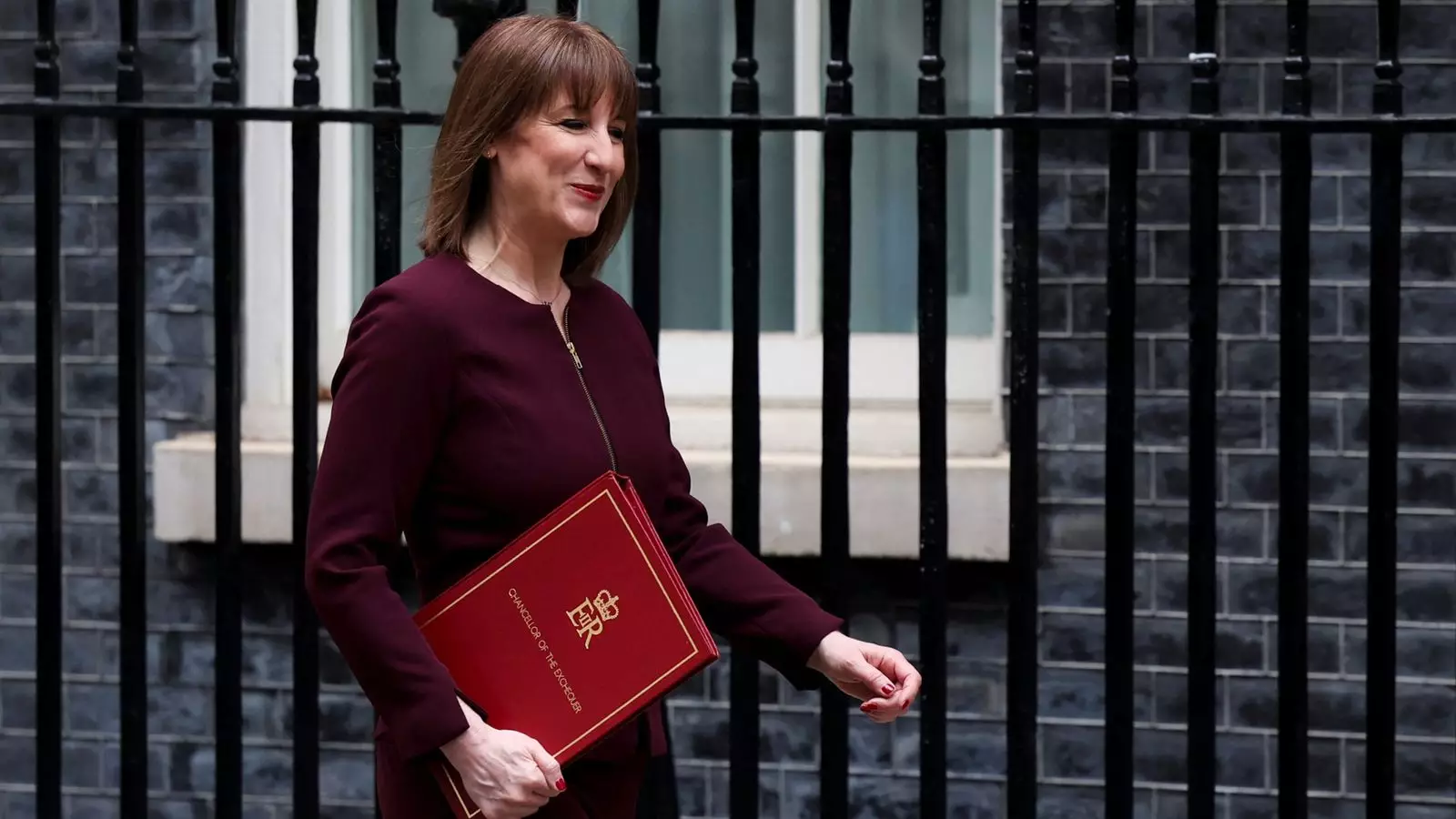In a striking turn of events, the Office for Budget Responsibility (OBR) has slashed the UK’s growth forecast for 2025 from 2% to a mere 1%. Chancellor Rachel Reeves, addressing this disheartening adjustment in her long-anticipated spring statement, has made it abundantly clear that she is anything but pleased with the figures for this year. Her dissatisfaction is palpable; it reflects a growing unease regarding the economic outlook not just for her party but for an entire nation grappling with unpredictable fiscal stewardship.
Reeves noted that although this year’s growth forecasts have taken a hit, the OBR has bolstered projections for the subsequent years through the current parliamentary period that concludes in 2029. To some, this paradox may evoke a glimmer of optimism, but a closer examination reveals a precarious balancing act on the façade of progress. The chancellor believes that meaningful economic growth requires “long-term decisions,” but with current projections showing only a slight rebound to 1.9% in 2026 followed by a gradual decline in subsequent years, her optimism appears deeply questionable.
Reforms That Don’t Deliver Immediate Results
One of the cornerstone reforms discussed by Reeves involves adjustments to the National Planning Policy Framework. While she touts mandatory housing targets and the development of “grey belt” land as vehicles for achieving a 0.2% increase in real GDP by 2029-30, one must wonder whether these long-term strategies are sufficient to offset immediate economic disappointments or whether they simply serve as a blank check for short-sighted legislations.
Reeves made emphatic statements about her serious plan for economic growth, including suggestions that reforms in pensions and the establishment of a national wealth fund could rejuvenate the economy. Yet, the efficacy of these initiatives hinges on time—time that may be in short supply given the urgency of economic concerns pressing on the populace today. The government seems to be navigating the economic landscape with a roadmap that lacks clarity on immediate strategies, which leaves one asking if the ongoing reliance on “hard yards” truly resonates with the immediate challenges that citizens face.
The Arithmetic of Austerity and Future Risks
The spring statement alludes to a phased budget recovery transitioning from a deficit of £36.1 billion in 2025-26 to an anticipated surplus by 2029-30. For all the apparent fiscal math, the underlying assumptions merit a healthy dose of skepticism. Shadow Chancellor Mel Stride characterized Reeves as a “gambler with half-fiddled fiscal targets,” and it’s hard not to be concerned that these optimistic projections come dressed as just another round of austerity measures that may not translate into real-world benefits anytime soon.
Indeed, Stride’s claims that the government has “no plan” to effectively manage the economic turmoil raise legitimate alarms. With cuts poised to impact the welfare budget by saving £4.8 billion and the health component of universal credit set to be halved, it seems as if the focus is not on sustainable growth but on quick fixes through slashes in essential services. Ultimately, will this kind of ‘savings plan’ resonate with the average citizen who may struggle even more amidst a backdrop of reduced welfare support?
A Call for Bespoke Solutions Instead of Generic Reforms
Reeves’s announcement about escalating defense spending along with voluntary redundancy schemes as a means to streamline civil service and generate savings raises eyebrows about the government’s prioritization. It speaks to a tendency toward broad strokes rather than nuanced, targeted reforms that genuinely address the needs of diverse sectors within society. The pledging of £2.2 billion for defense while social safety nets are frayed indicates a misalignment of priorities that fosters additional division rather than unity on fiscal issues.
This strategy seems to imply that economic growth can be engineered from the top down, without addressing the fundamental needs of the working and middle classes who are often the key drivers of sustainable economic stability. For growth to materialize, policymakers should engage in identifying bespoke solutions that respond not only to market forecasts but also to the lived experiences of everyday people.
In an era where trust in government is eroding, transparent communication and genuine engagement with citizens are crucial. The current labyrinth of policies, while well-intentioned, could easily descend into a quagmire of unmet expectations unless the government decides to recalibrate its approach toward more inclusive economic planning.



Leave a Reply